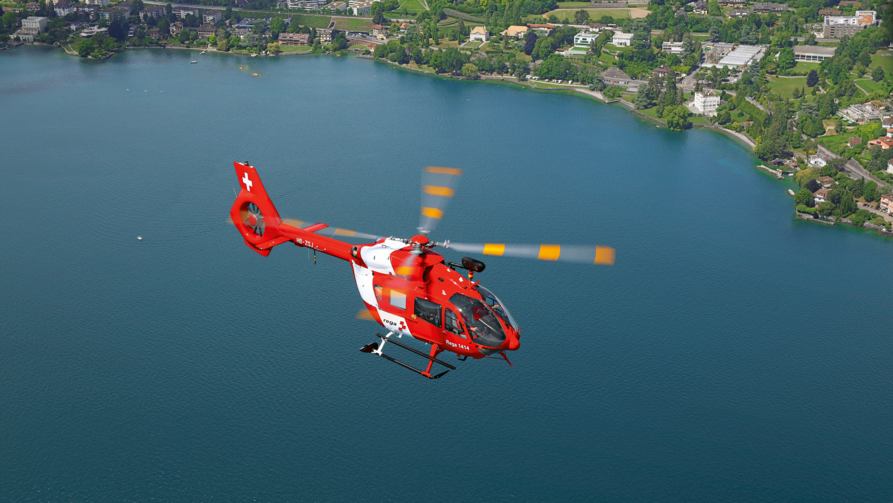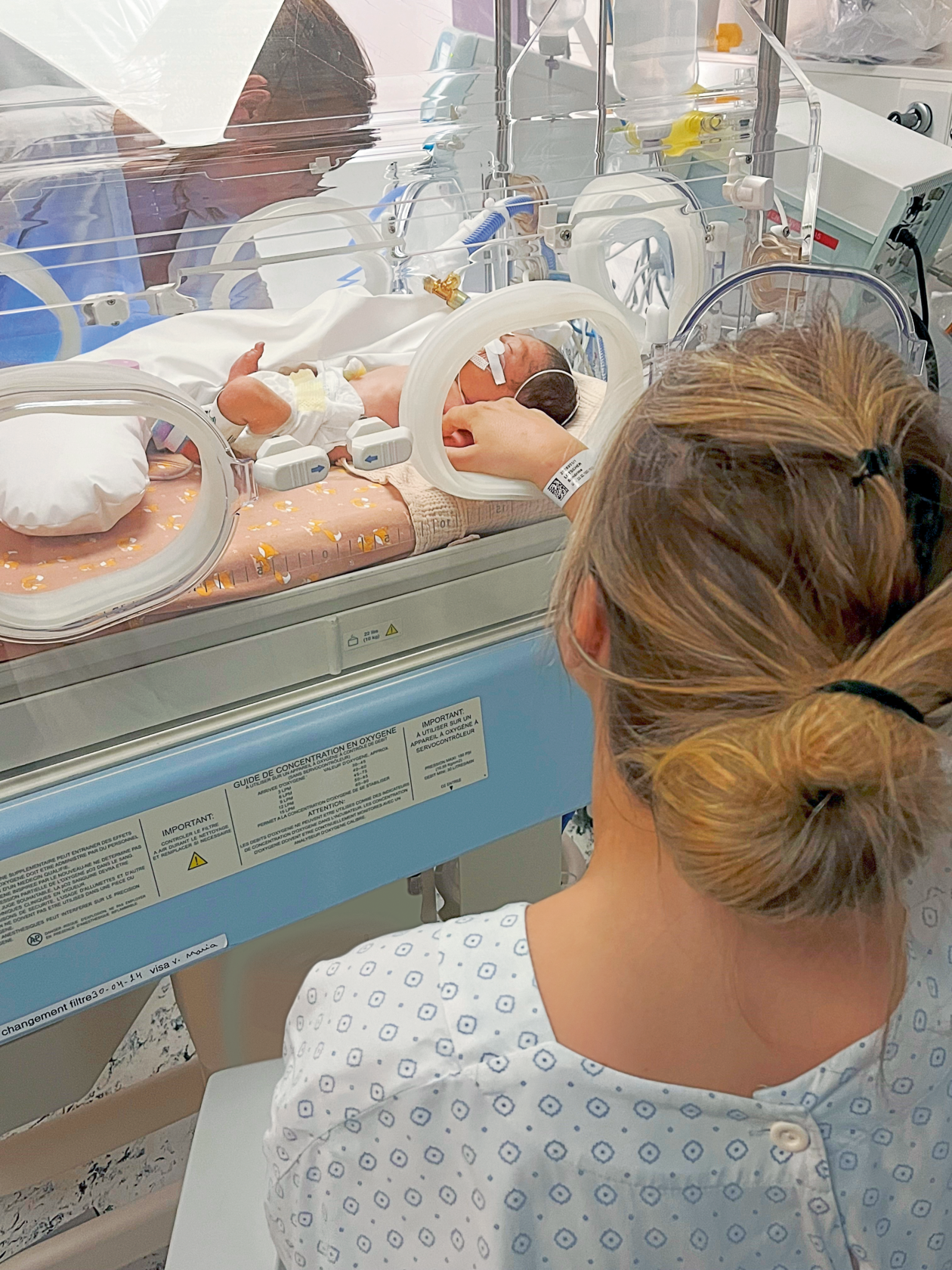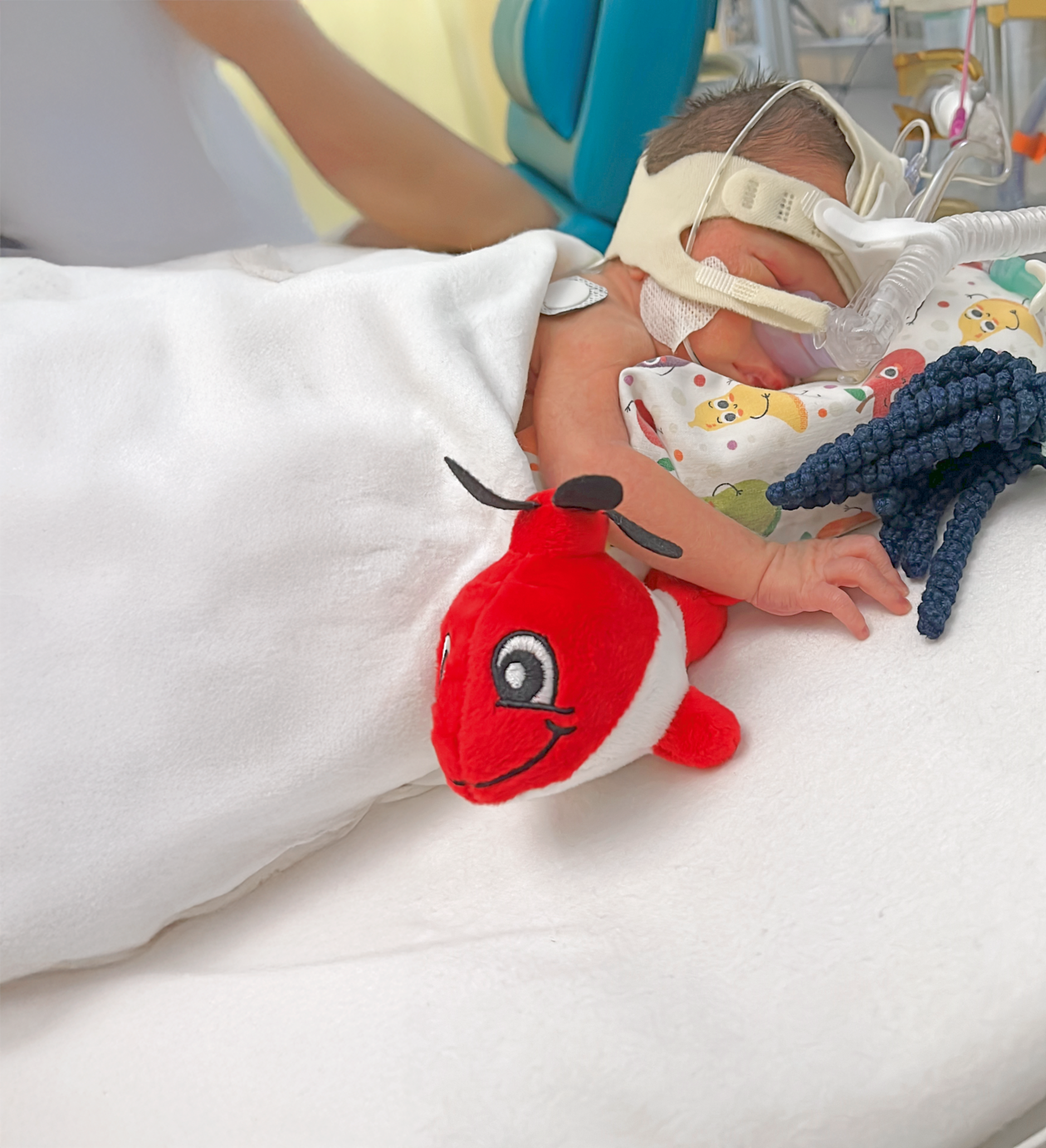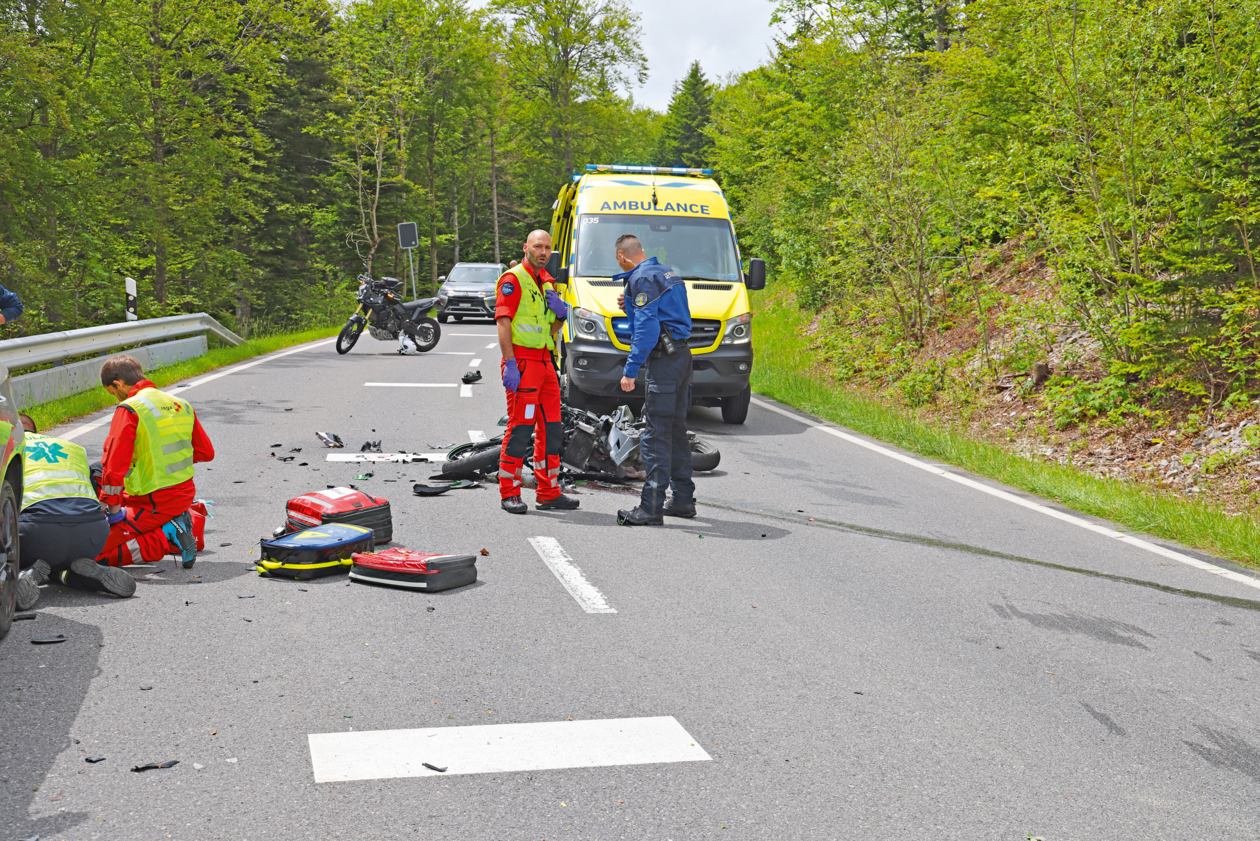What awaits the crew on this particular day is yet uncertain. The weather is capricious. The forecast is suggesting heavy thunderstorms. In the office at the Rega base in Lausanne, pilot Simon Luginbühl keeps his eye on the webcams and weather forecasts. “It’s worth checking from time to time. But as soon as we get called out and I know which direction we’re flying, then I assess the situation thoroughly. I check the precipitation radar and the wind speed, for example”, he explains.
One mission after the other
An alarm sounds: There’s been a motocross accident in Le Brassus (Canton Vaud). While on the flight to the mission location, emergency flight physician Julian Oberholzer studies the information communicated by the Operations Center and assesses the situation: “Given the patient’s age – he’s 82 – and the risks that can occur with an accident of this kind, I’m anticipating serious injuries.” Pilot Simon Luginbühl and paramedic Mathias Galter choose a landing site that is as close as possible to the injured person. Julian Oberholzer approaches the injured motorcyclist, examines him thoroughly and administers strong painkillers. He sees that the man has broken his femur and he straightens his leg. The patient can now be placed on the vacuum mattress and carefully transported. The patient’s friends help the Rega crew to carry him across the muddy terrain to the helicopter. Without wasting any time, the crew flies to Lausanne University Hospital (CHUV). Once the patient has been safely delivered to the hospital, Simon Luginbühl contacts the Rega Operations Center to let them know that the crew is ready for its next mission. A few seconds later, a new alarm sounds on the crew’s mobile phones. Shortly after, the rescue helicopter takes off – this time towards Yverdon hospital. As Julian Oberholzer reads through the information that has been sent, he becomes aware of the gravity of the situation. A young man is in need of an urgent neurological examination. He has sustained very serious head injuries while playing sport. Every minute counts.
Landing at Yverdon hospital
A short time later, the crew arrives at the hos pital in Yverdon-les-Bains. Seven specialists are standing around the intubated patient in the emergency room. Julian Oberholzer is informed that the young man collided head on with another player during a game of rugby and has been falling in and out of sciousness. The crew flies the patient to the CHUV, where a more accurate assessment can be carried out using medical imaging. During the flight, Julian Oberholzer monitors the patient using additional monitoring devices in order to be able to identify any sudden changes and respond accordingly.
Meanwhile, in the south-west of Switzer land, a couple is visiting relatives in Niedergesteln (Canton Valais), completely unaware that the day is about to take a dramatic turn. Sandrine is 32 weeks pregnant and having an enjoyable afternoon when she suddenly starts experiencing contractions. Alarmed, she calls her midwife in Bern who urgently advises her to go to the nearby hospital in Visp. Her husband Etienne drives her there.



